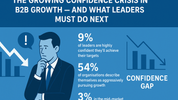We’re now living in a state of “digital disruption.” This means technology has transformed work and business as we know it. Consumer behavior and expectations have changed, and organisations must evolve to meet the changing needs of their customers.
I came across this article on 'Forbes' (link below) that discusses what real transformation looks like, not iterative and incremental change as some retailers seem to think is transformation, but something that really alters the consumers perception of what 'was', to what 'is'.
"Many things that seem like transformation actually aren’t: opening an innovation center, running “design-thinking” workshops, releasing a new app or voice experience, etc.
Digital transformation isn’t about any single project. Rather, it’s about changing or expanding how you create and exchange value with customers and suppliers."
Business transformation has more to do with a better understanding around how your potential customers are wanting to access information about your product and company in a way that doesn't include risking your cold spammy phone calls and e-mails, it's certainly not just about 'software' that will probably change very little, just like that last 'software' initiative your company embarked upon.
With your buyer looking for a solution to their problem, you need to supply them with relevant content. The content needs to be informational and helpful rather than sales/advertising driven.
Decision makers greatly prefer to get information from articles versus advertisers, with 80% saying as much in a survey from the Content Marketing Institute.
In addition to a changing customer, brands have to also deal with a more competitive landscape. It’s likely that all of your competitors are implementing new digital initiatives and trying to take advantage of technology. It’s not a matter of if you’ll transform, it’s when—and that when is now.
My headline is probably what got your attention for this post, and it definitely isn't click bait.
I was once working with an extremely disruptive business who had invented the industry term 'Re-Commerce', these were the people who bought your old CD's, DVD's, Games etc, refurbished them and sold them via every marketplace (Amazon, eBay etc) as a result became the largest 3rd party seller on all these marketplaces around the world.
How we did this, and then re-invented ourselves to do the same for old tech, (mobiles, PC's, Tablets etc) and Lego bricks is a story for another day.
A critical piece of the transformation jigsaw that saw the real boom in the business was being able to take an existing time consuming process and massively over simplify it for the consumer, this innovation didn't just move the conversion needle from an average of 3% to a staggering consistent 19%, it literally transformed the company.
To do this we obsessed about how we can persuade you to 'sell' more of your unwanted media in a way that was 'Surprisingly Easy' - this was our internally aligned focus, it was the direction that everyone inside and outside the company could understand, why? - because it was 'consumer centric'.
Once we had done this it became a strong filter for future innovations. It quickly highlighted what we could do, how quick we could do it, most important it answered the big question around 'WHY' we should do it, it also highlighted what we shouldn't get distracted with.
As Bob Dylan famously said ‘The answer my friend is Blowing in the Wind’ - his song became an anthem for huge social change during the Sixties because it appealed to a generation who didn’t want to follow the ‘old order’ of things, the same can be said about the Sex Pistols and the Punk rock movement, and who can forget what Napster did to the music industry?.
The huge fault lines around the ‘push advertising, fake news and outbound intrusive sales’ process are well documented as audiences are today empowered with the ability to ignore, skip & block those messages.
The impact that social media is having on how your prospects and existing customers who are already researching what/who you are is already upon us.
If it’s not on your board agenda, and it's on your competitors, best prepare for your competitor or an unknown disruptor to kill at worse, or dilute at best your business sooner than you think.
At no time in the history of the Internet has it been easier and with a relatively low cost to generate sales opportunities.
- You don’t need a database.
- You don’t need to advertise.
- You don’t need an external media team.
- You don’t need to do outbound cold calling.
- You don’t need to do mailings.
Problem is, you haven't worked out what the immense power that's right in front of you is yet, because you still think 'Social Media is about advertising your offers, products and services, or simply sharing pictures of your latest company award win - but, its actually (in business terms) so much more than that!
Substantially transformed businesses not only look different to customers but often also make money differently. Pitney Bowes has a legacy in physical postage meters but now sells cloud software and services. Its shipping APIs, for example, let developers build its capabilities — from creating daily shipping manifests to searching for addresses to surfacing the best shipping rates — into their applications. That is a transformative evolution.
 unknownx500
unknownx500











